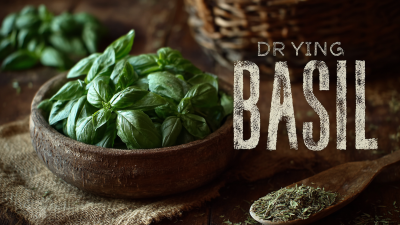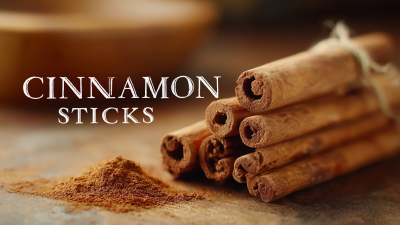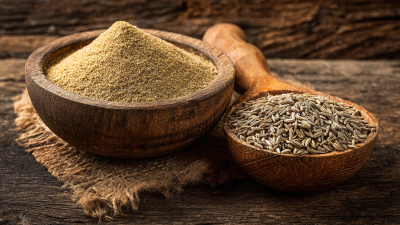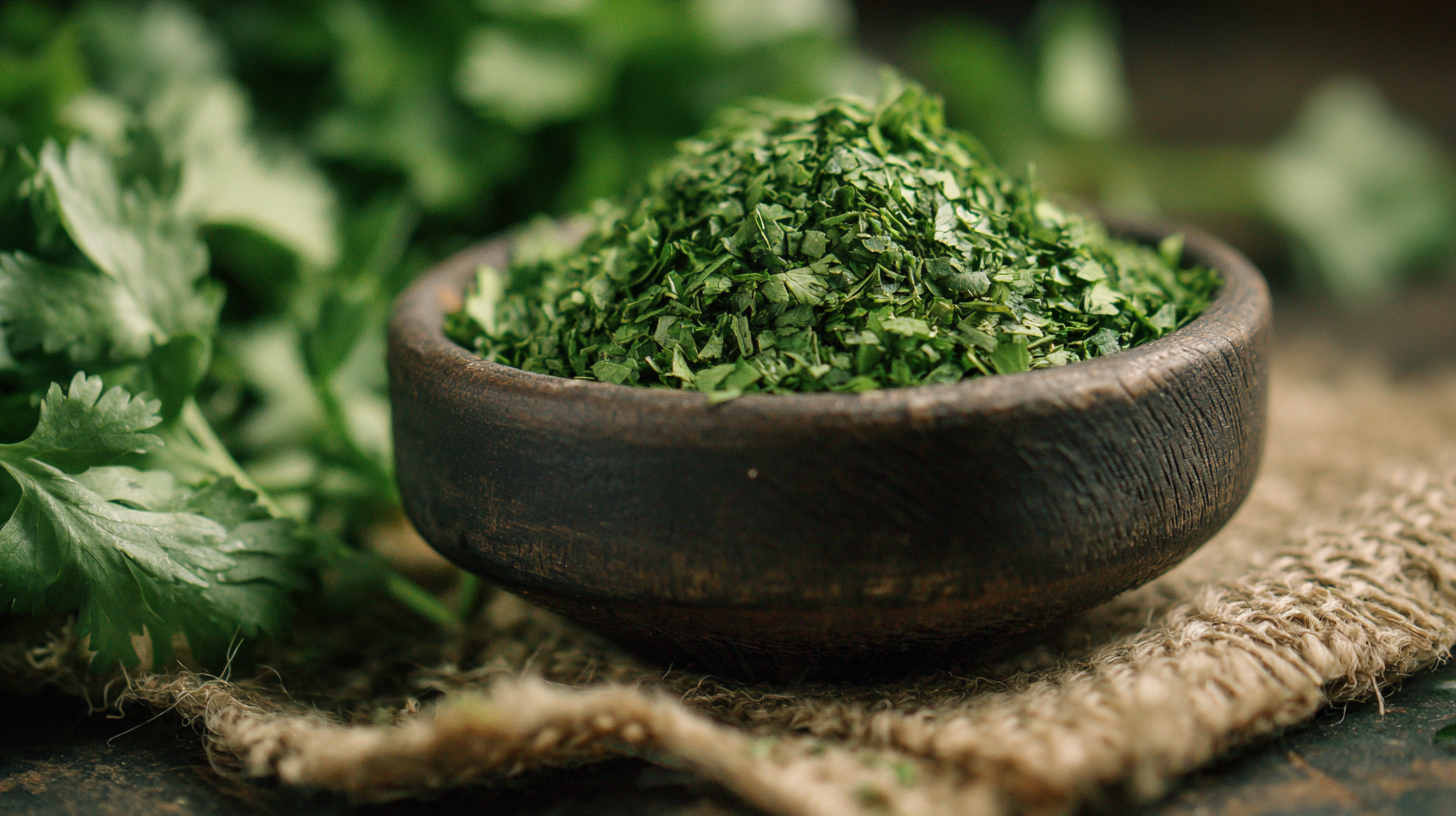 Dried cilantro, a versatile herb that often finds a place in kitchens around the world, is celebrated not only for its distinct flavor but also for its potential health benefits. According to industry reports, the global market for dried herbs is projected to reach $8.57 billion by 2027, with cilantro being one of the most sought-after varieties due to its unique taste and aromatic profile. The use of dried cilantro can elevate dishes by adding depth, complexity, and a hint of freshness that complements a wide array of cuisines, from Mexican to Middle Eastern.
Dried cilantro, a versatile herb that often finds a place in kitchens around the world, is celebrated not only for its distinct flavor but also for its potential health benefits. According to industry reports, the global market for dried herbs is projected to reach $8.57 billion by 2027, with cilantro being one of the most sought-after varieties due to its unique taste and aromatic profile. The use of dried cilantro can elevate dishes by adding depth, complexity, and a hint of freshness that complements a wide array of cuisines, from Mexican to Middle Eastern.
As culinary enthusiasts increasingly seek ways to enhance their cooking experiences, understanding how to effectively utilize dried cilantro can transform ordinary meals into extraordinary culinary creations. This guide explores innovative methods to incorporate dried cilantro into your dishes, ensuring that your cooking not only appeals to the palate but also embraces the health-conscious trends dominating modern gastronomy.
Selecting the right type of dried cilantro is essential for elevating your culinary creations. With its unique flavor profile, dried cilantro can introduce a subtle depth to your dishes. When choosing dried cilantro, look for brands that offer high-quality, vibrant green flakes. Avoid products that appear dull or overly crushed, as they may have lost their aromatic properties. When possible, consider purchasing dried cilantro from specialty spice shops or bulk bins, where you can ensure freshness and potency.
Tips: To maximize the flavor of dried cilantro in your recipes, try rehydrating it in a small amount of warm water before adding it to soups or stews. This allows the herb to release its essential oils, enhancing the overall taste of the dish. Additionally, when using dried cilantro in dry rubs or marinades, combine it with other spices to create a balanced flavor profile that complements your main ingredients. Remember, a little goes a long way, so start with a small amount and adjust to your taste.
| Type of Dried Cilantro | Flavor Profile | Best Used In | Recommended Quantity |
|---|---|---|---|
| Coarse Ground Cilantro | Earthy and slightly citrusy | Soups, stews, and marinades | 1-2 teaspoons per recipe |
| Fine Ground Cilantro | Intense and fragrant | Salads, dressings, and dips | ½-1 teaspoon per recipe |
| Whole Dried Cilantro Leaves | Mild and herbaceous | Rice dishes, tacos, and beef dishes | 2-3 teaspoons per recipe |
| Cilantro Powder | Concentrated and robust | Spice blends, seasoning rubs, and soups | ¼-½ teaspoon per recipe |
Dried cilantro, often overlooked in the culinary world, can elevate dishes when used correctly. According to a market research report by Grand View Research, the global herbs and spices market is projected to reach $48.9 billion by 2025, indicating a growing trend towards the use of dried herbs. To incorporate dried cilantro effectively, one of the best cooking methods is to add it to dishes early in the cooking process. This allows the flavors to meld and develop fully, enhancing the overall taste of the dish. For instance, adding dried cilantro to simmering soups or sauces allows the essential oils to infuse, providing a robust flavor profile.
Another effective method is to use dried cilantro as a finishing touch. Sprinkling it over cooked foods like grilled meats or roasted vegetables can add a burst of flavor and visual appeal. As reported by the US Dry Bean Council, this technique not only amplifies the dish's aesthetics but also capitalizes on cilantro's health benefits, which include anti-inflammatory properties and high levels of antioxidants. Whether you’re making a spicy salsa, a comforting stew, or a fresh salad, integrating dried cilantro at different stages of cooking can greatly enhance your culinary experiences.
Dried cilantro is a versatile ingredient that can elevate a variety of dishes. When pairing dried cilantro with other spices and ingredients, consider balancing its earthy flavor with bright and bold components. For instance, combine it with citrus zest or juice to create a refreshing contrast in salads and salsas. Adding garlic powder or onion powder alongside dried cilantro can also enhance the savory notes, making it an ideal seasoning for dips and marinades.
Tips: When using dried cilantro, remember that its flavor is concentrated. Start with a small amount—about half the quantity you would use if it were fresh—to avoid overpowering your dish. Additionally, consider the cooking process; sprinkling dried cilantro towards the end of cooking preserves its flavor, especially in soups and stews.
Other excellent pairings include cumin and chili powder, which complement the warmth of dried cilantro, notably in Mexican and Indian cuisines. Try mixing dried cilantro with smoked paprika to add a unique depth to roasted vegetables or grilled meats. This combination provides a delightful flavor boost that can transform an ordinary meal into a culinary experience.
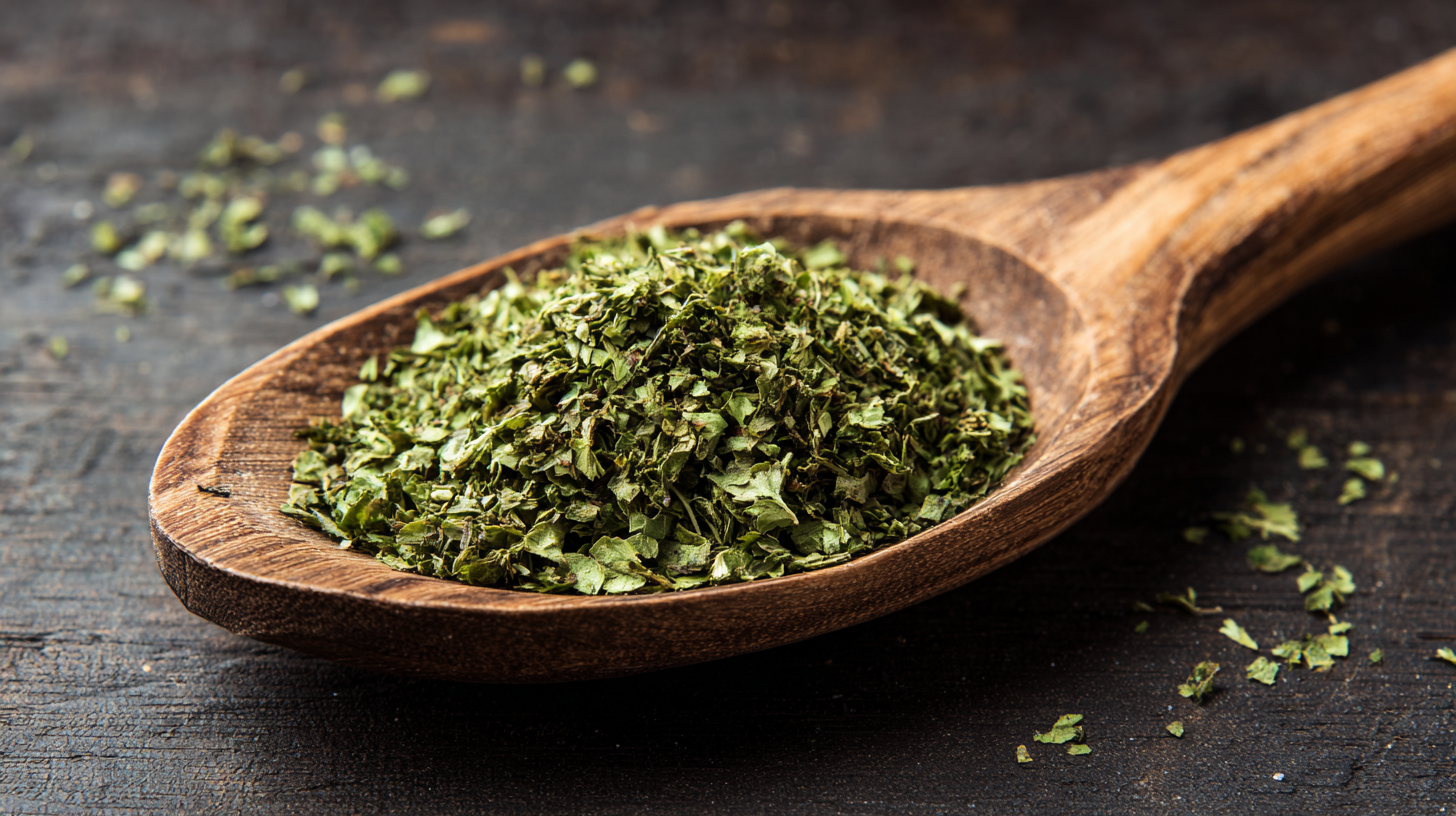
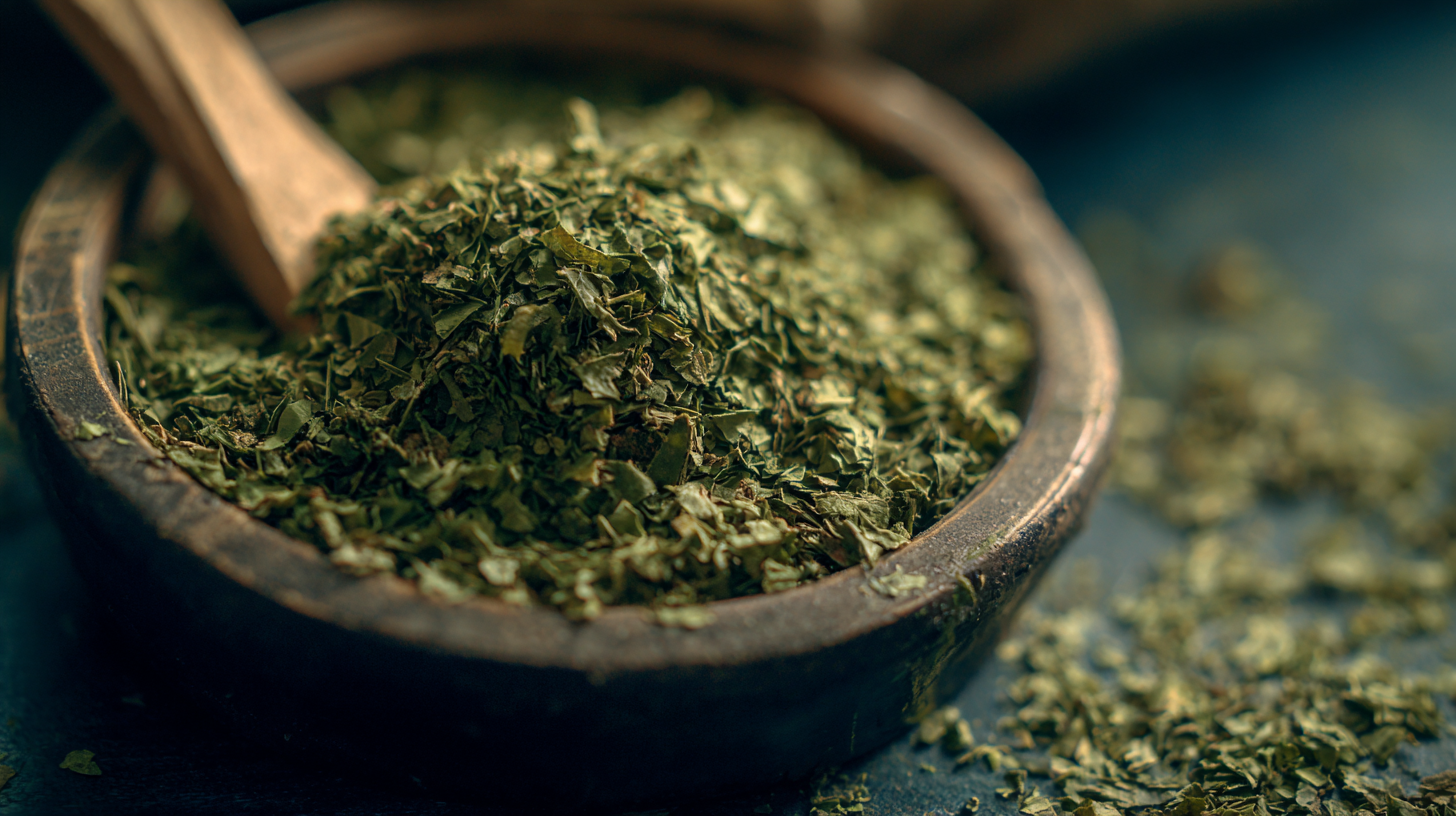 Dried cilantro, a versatile herb, can elevate a myriad of everyday dishes, enhancing flavor profiles and adding nutritional value. According to the HerbalGram report from the American Botanical Council, herbs like cilantro not only contribute essential vitamins and minerals but also possess antioxidant properties that can benefit overall health. Incorporating dried cilantro into simple recipes like soups, stews, and sauces can infuse these meals with a fresh, zesty flavor. Just a teaspoon of dried cilantro can brighten a classic tomato sauce, transforming an ordinary pasta dish into a culinary delight.
Dried cilantro, a versatile herb, can elevate a myriad of everyday dishes, enhancing flavor profiles and adding nutritional value. According to the HerbalGram report from the American Botanical Council, herbs like cilantro not only contribute essential vitamins and minerals but also possess antioxidant properties that can benefit overall health. Incorporating dried cilantro into simple recipes like soups, stews, and sauces can infuse these meals with a fresh, zesty flavor. Just a teaspoon of dried cilantro can brighten a classic tomato sauce, transforming an ordinary pasta dish into a culinary delight.
In addition to traditional dishes, consider using dried cilantro in creative applications. Sprinkle it over roasted vegetables to add depth or mix it into marinades for meats and fish, where it pairs beautifully with citrus. A study published in the Journal of Food Science highlights that cilantro contains compounds that can enhance the taste of fatty foods, making it an excellent choice for richer dishes. By integrating dried cilantro into everyday cooking, not only do you enjoy its unique flavor, but you also tap into its potential health benefits, making your meals more exciting and nutritious.
Storing dried cilantro properly is essential to maintain its vibrant flavor and beneficial qualities. To preserve its potency, always keep it in an airtight container, preferably a glass jar, which minimizes exposure to air, moisture, and light. This helps in preventing the essential oils from dissipating and retains the herb's signature taste, making it suitable for a variety of dishes. Avoid storing dried cilantro in the pantry near heat sources like ovens or stoves, as these can compromise the flavor over time.
Furthermore, it's advisable to keep dried cilantro in a cool, dark place. Ideal storage locations include kitchen cabinets or spice drawers that do not see daily sunlight. It's also important to check for any signs of spoilage periodically; while dried herbs have an extended shelf life, they can lose flavor intensity. For maximum freshness, consider labeling your container with the purchase date, ensuring you rotate your stock and use the oldest first. Following these simple storage tips will allow you to enhance your culinary experiences with dried cilantro, ensuring it delivers delightful flavor in each dish.

